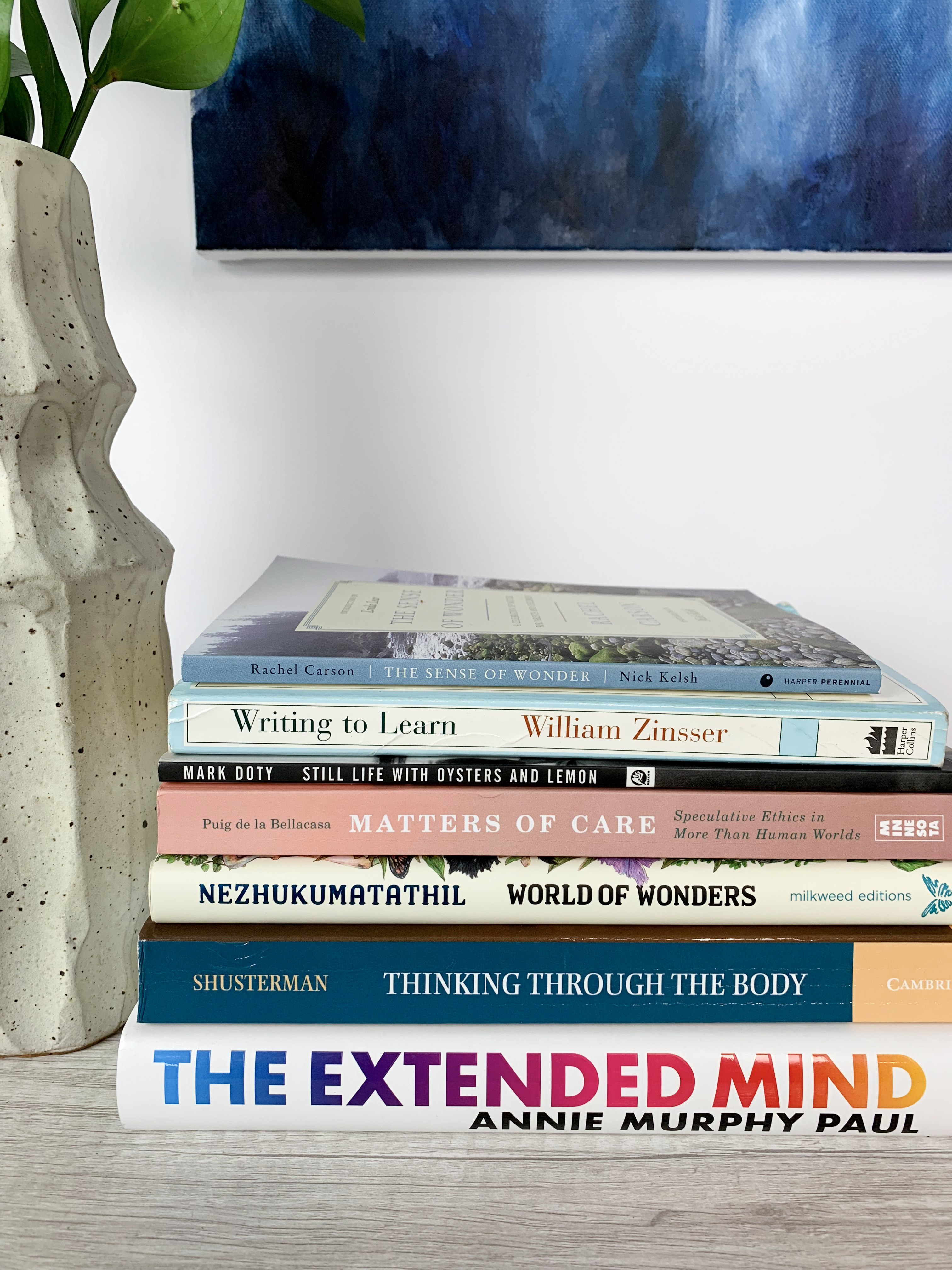
Now that I’m deep in book proposal land, I’m trying to keep my reading a little more focused. Meaning I’m only reading books that are related to the subject matter of my book (let’s just loosely call that “how we experience art”), books that reflect the style of writing I want to embody in my book (mostly nature writing), and books about writing.
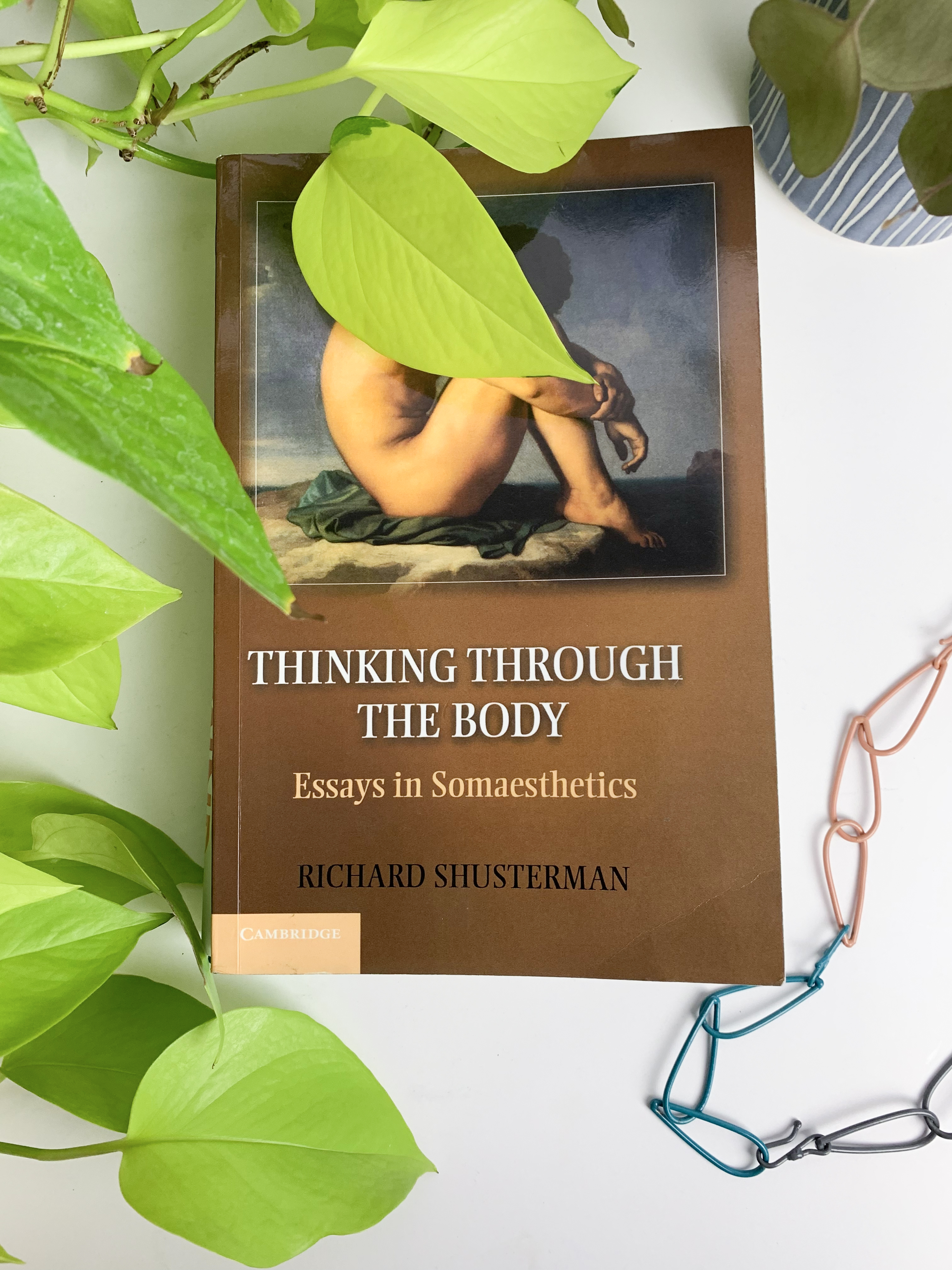
Thinking Through the Body by Richard Shusterman has been on my list ever since I read All About Process back in January. Shusterman combines the fields of somatics, essentially body and movement studies, with aesthetics, the philosophic study of beauty, art, and nature, to create a new field called somaesthetics. Needless to say, with my own interest in the body and sensory experiences of art, this one was right up my alley. Philosophy is not my favorite subject matter, so I didn’t love a few of the essays where he gets into the “he said, he said” of philosophical history, but there was so much interesting stuff about bringing our bodies into aesthetic appreciation that I know I’ll return to this book a time or two, and I’ve got a few of his other books on my TBR pile as well.
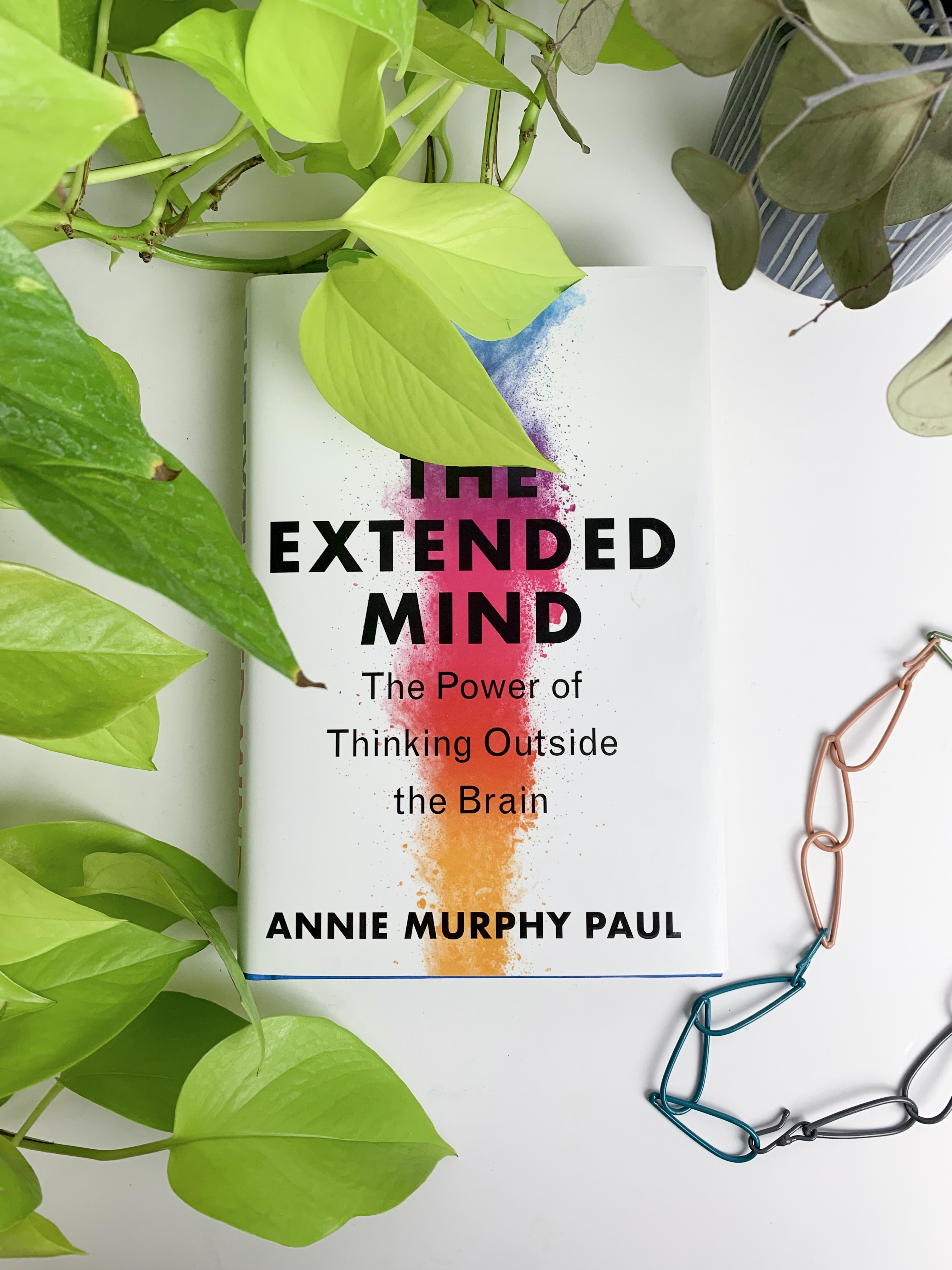
I’ve been anxiously awaiting the release of The Extended Mind: The Power of Thinking Outside the Brain by Annie Murphy Paul since I heard about it a few months ago, and it did not disappoint. While the idea that we don’t just think with our brains, but with our bodies, our environments, and other people is not anything new to artists and creatives, it was really nice to see that backed up with scientific research. This book should be a must-read for any artist or creative who’s ever felt stifled by the brain bias in our contemporary culture. And honestly, it should really be required reading for everyone. (Fortunately, it’s highly readable and not academic or too complex to follow.) I had one little (ok, big) gripe with the part of the book where she talks about the valuing of copying, and her examples from the business world did nothing to make me concede her point. But overall, I love that this book gives a layer of justification to things that we artists already know, but are sometimes (oftentimes) made to believe aren’t true by our society.
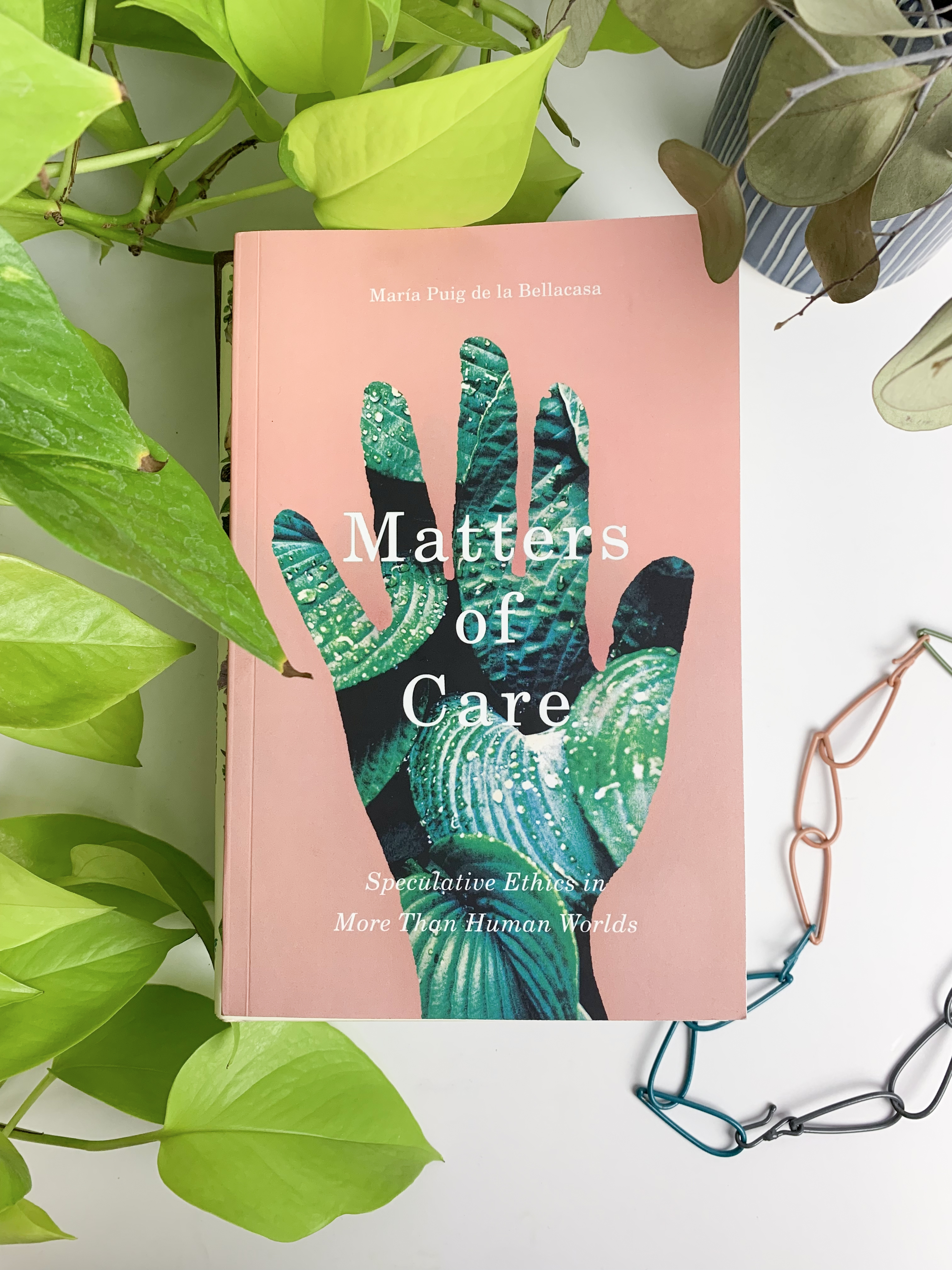
Of all the books I read in June, Matters of Care by María Puig de la Bellacasa probably stretched the boundaries I put upon my reading the most. It could potentially fall under nature writing, but the overall tone is much more academic than I want to take in my own book. But I was drawn to it for its feminist readings of care, the ways care forms our relationship with things, and the role of touch in care. For me, touch is a big part of the conversation around experiencing art, which is why I decided to shoehorn this one in. I wouldn’t recommend it to everyone due to its academic tone, but it gave me a lot of food for thought going forward.
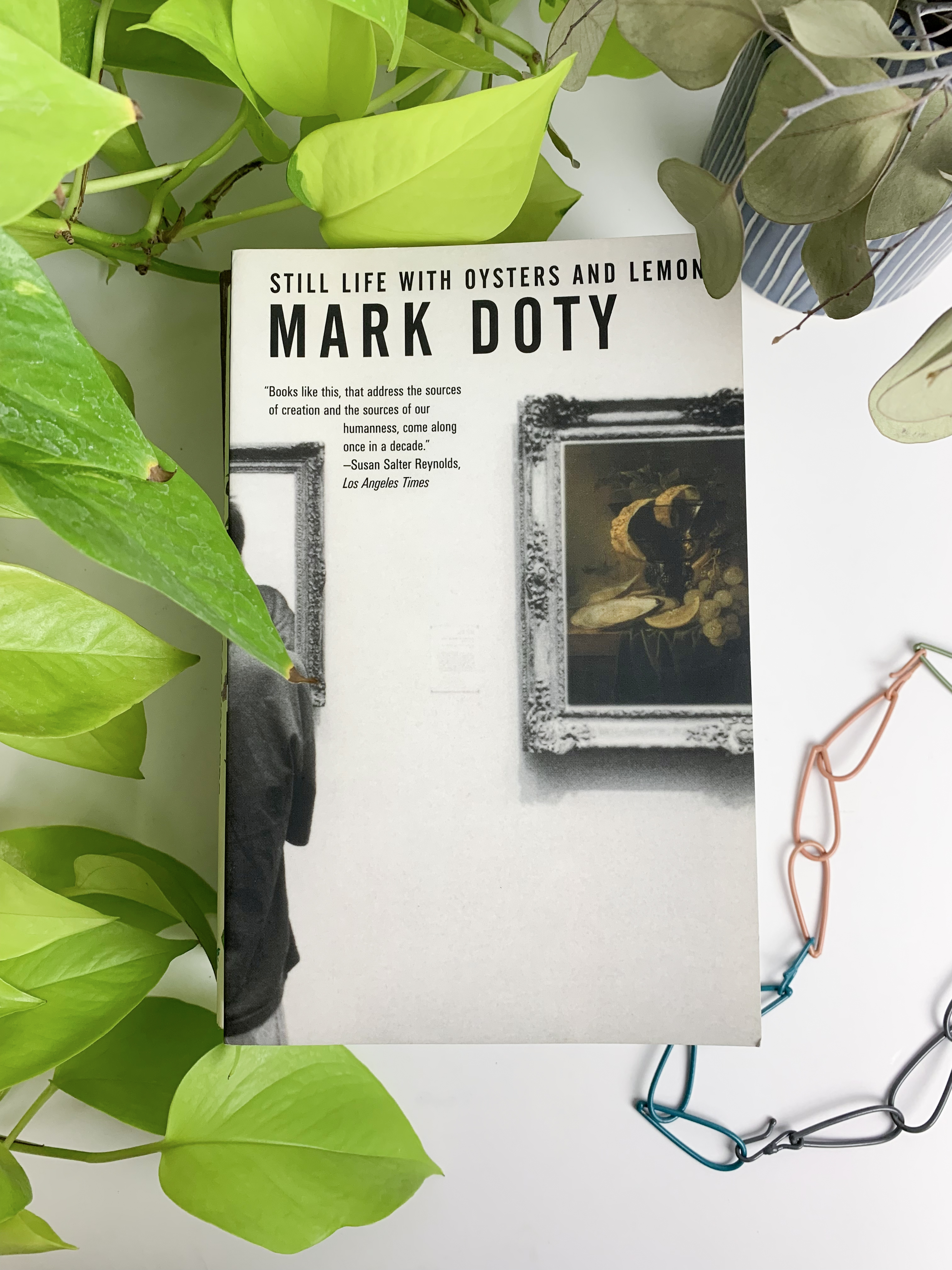
Still Life with Oysters and Lemon by Mark Doty has been on my shelf for a while, and I was pleased to discover that not only is it a book about our experience of art, but its also as beautifully written as many of the nature books I’ve been reading for inspiration. It’s a fairly short book, but it’s also really lovely, and one I’d recommend to other artists looking for something that both helps you escape and asks you to pay more attention.
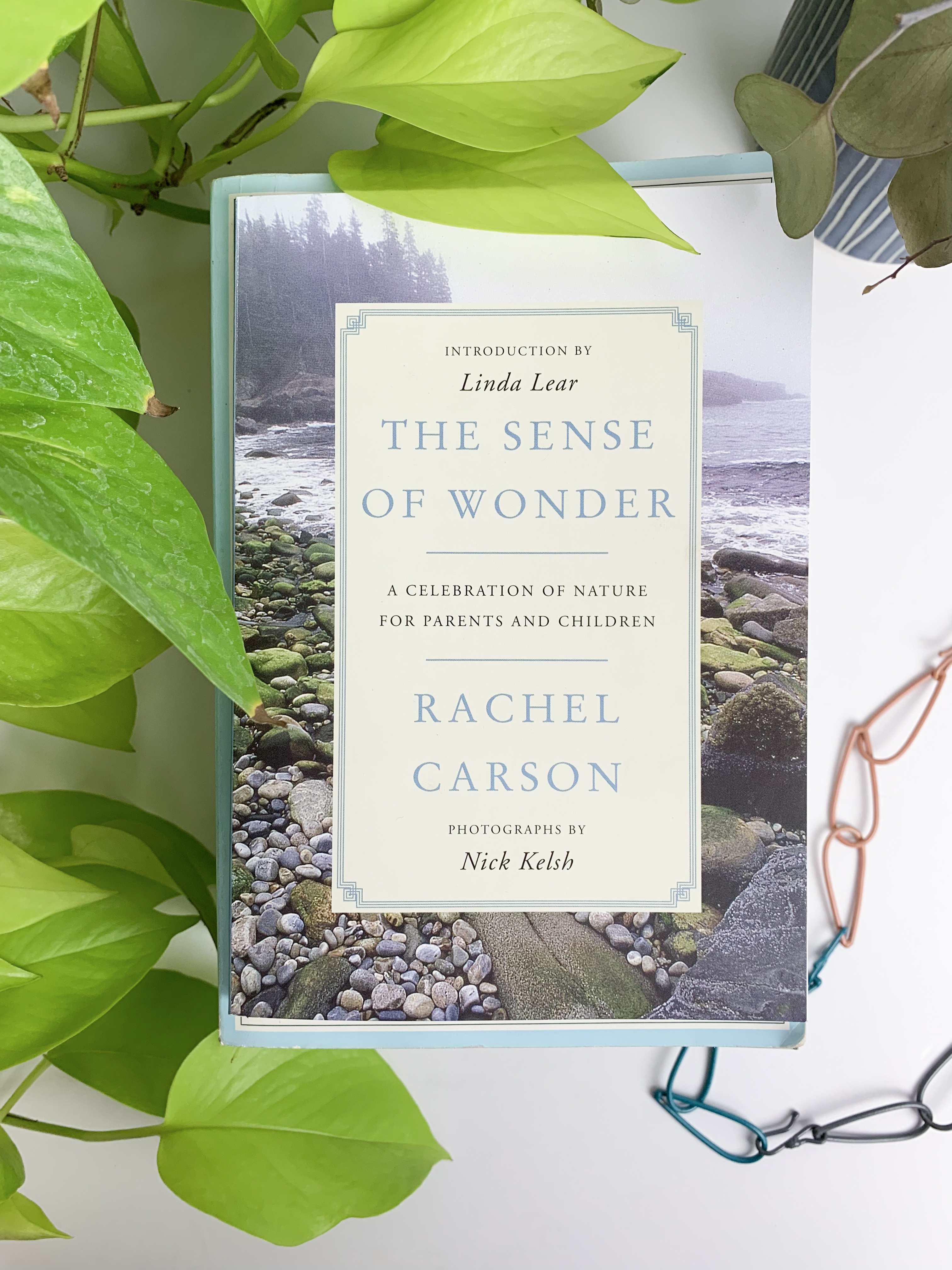
Another short but lovely book I read last month was Rachel Carson’s The Sense of Wonder. The book was adapted from an essay that Carson planned to turn into a fuller book before her death, and while it’s sad to think of what didn’t make the page, what she has written is worth reading. She shares the ways she has brought her nephew into nature, not with the goal of educating him, but of helping him experience wonder at the natural world. There are, of course, parallels I can see in this with the experience of art, especially as an aunt myself. There are also lots of beautiful images, so if you’re looking for an easy-to-read, pleasurable book to help cut your screen time, this is a great place to start.
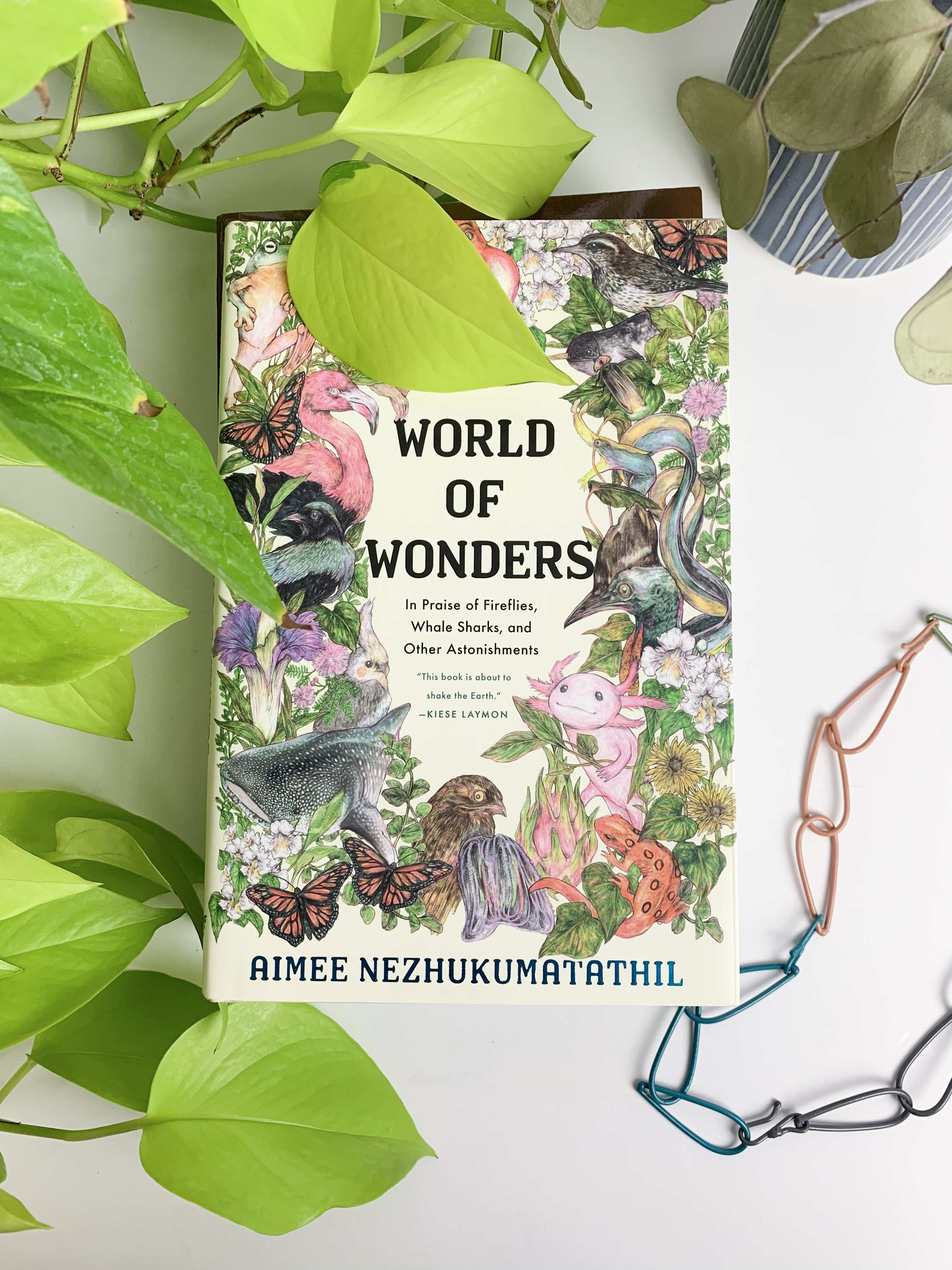
World of Wonders by Aimee Nezhukumatathil is another lovely nature book with memoir folded throughout. Most of the vignettes in the book are about animals, and a few are about plants, but all mix in Nezhukumatathil’s personal experience, from growing up as the daughter of Indian and Filipina parents in the US, to her own experience as a mother of biracial children, to her travels and adventures to seek out wonder, and those moments of awe from her own life. Another short but worthwhile read to help us submerge ourselves in the pleasures of the natural world.
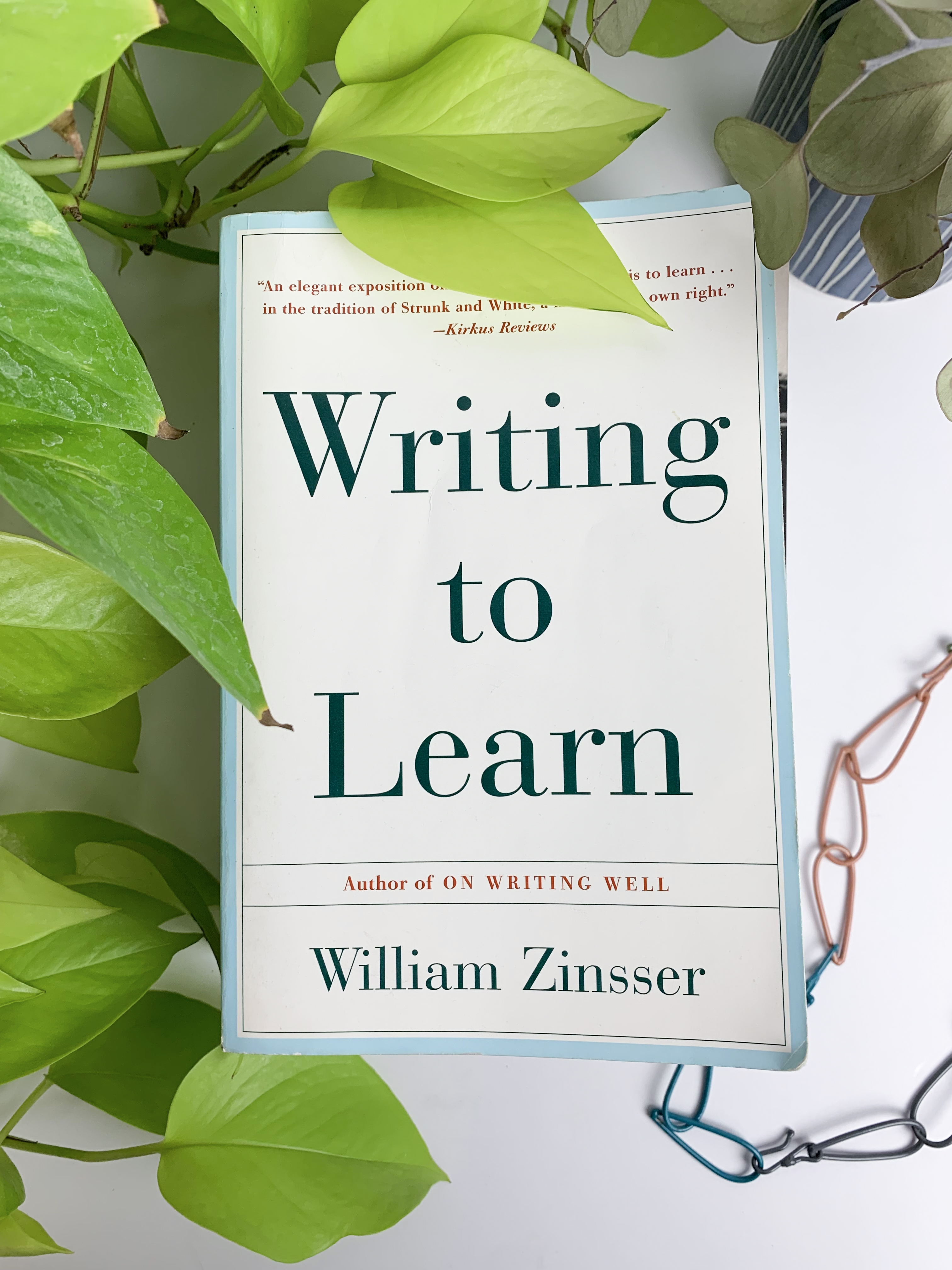
My last book of the month was technically a reread, but I knew at some point in my book writing journey I would come back to William Zinsser. I always recommend his classic book On Writing Well for any artist or creative (or really anyone) who wants to write better, but Writing to Learn is probably my favorite of his books, so of course, I needed to read while working on my book proposal. (I plan on rereading On Writing Well a bit later when I’m more fully into the writing process.) What I love about Writing to Learn is not only that Zinsser is a great writer – clear, concise, and not jargony or academic – but that he shares experts from his favorite writing across many disciplines. Reading this time, I found myself especially drawn to the examples in the music chapter, as music is not something that comes naturally to me. But seeing examples of how clear writing can make just about any subject accessible gives me hope for my book as I try and bring it into the world.
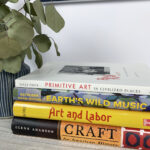
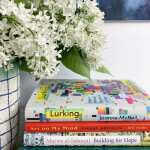
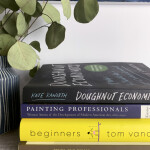
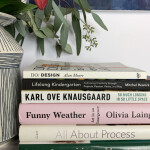
Leave a Reply